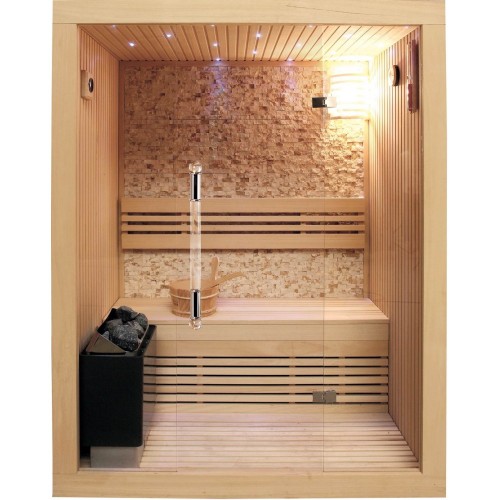Traditional Sauna Things To Know Before You Get This
Wiki Article
3 Simple Techniques For Traditional Sauna
Table of ContentsSome Known Facts About Traditional Sauna.The Ultimate Guide To Traditional SaunaSome Known Factual Statements About Traditional Sauna See This Report on Traditional SaunaWhat Does Traditional Sauna Do?
A lot of the weight lost in a sauna is water loss and is re-gained upon rehydrating. However, certainly sauna can be a fundamental part of a healthy and balanced weight reduction program. To look at the differences in between conventional and IR saunas, I will divide these into verifiable, theoretical, and produced distinctions.Hence, the hottest point in the saunawhich is at the ceiling straight above the sauna heateris generally in between 185 and 190 F. Claims that a standard sauna exceeds 200 F is simply not true and not applicable for electric saunas sold in the United States. The temperature for a far-infrared sauna is typically set in between 120 and 140 F; nonetheless, unlike the conventional sauna, the goal in and IR room is not to attain a heat.

When a traditional sauna has been correctly heated up, the sauna walls are warm, the air temperature level has attained established temperature level and the rocks are super heated. As an interesting side note, the warmed wall surfaces and the rocks are giving off far-infrared heat, incorporated with the warmed air, to produce an "wrapping up warmth".
Traditional Sauna Things To Know Before You Get This
When the high temperature is achieved, the aspects cycle on and off to keep the high temperature. Most typical sauna customers appreciate putting water over the rocks to produce heavy steam to raise sauna moisture degrees. The advantages of putting water over the rocks include: making the room extra comfy, dampening the nasal passages, and enabling the usage of aromatherapy by blending important oils with the water.

When the power gets in the body, it triggers the body temperature level to boost and eventually leads to perspiration. In an infrared sauna it is necessary for the emitters/heaters to continue to be on nearly frequently. Because there is no mass of rocks to retain heat, the sauna will cool if the emitters closed off.
An Unbiased View of Traditional Sauna
As pointed out above, the sauna bather in an infrared area wishes to place himself before operating emitters to get optimal take advantage of the warmth. The Resources heating time for both areas can be very various, relying on exactly how the spaces are used. For a conventional sauna, a bather should allow 30-40 minutes for the room to attain a preferred temperature level and to appropriately pre-heat the rocks.
A well built sauna will usually achieve a temperature of 150-160 F in about 30-40 minutes. For hotter temperatures, the area may need to warmth for a longer period.
To some, 15 minutes was "squandered" while the infrared energy warmed the timber panels rather than warming a body, while others find a pre-heated area to be a lot more comfortable and think a raised beginning temperature level is necessary to begin perspiring. The length of suggested usage for each and every area is roughly the very same (10-15 minutes per session); nevertheless, as a result of the reduced air temperatures and the capability to really feel the effects of infrared heat faster than a typical sauna, it is not unusual for a person to spend a total amount of 20-30 mins in an infrared sauna.
The 9-Second Trick For Traditional Sauna

The average price per kWH of electrical power in the united state is about $0.11, so a 4.5 kW heating unit will set you back around $.50 to run for one hour, if the heating unit runs continuously for one hour. Generally a sauna heating unit will certainly weblink run for 75% of the very first hour and 50% of succeeding hours on since the aspects cycle once the set temperature level is achieved.
A 2 person far-infrared room is normally physically smaller sized than a traditional sauna, frequently about 4' x 4' or smaller sized. The IR heating system is normally 1.5-1.7 kW utilizing a 120 volt 15 amp plug-in service. Given that the room can be used sooner than a sauna area, we will certainly think the space is utilized for to of an hour consisting of warmth up time.
There is a seldom reviewed distinction in the social experience between the two spaces. While our society has lost some of the social benefit of advice the conventional sauna experience, it can be very socially rewarding (Traditional Sauna). From family time in the sauna, to heart-felt discussions with loved ones, to sauna partiesthe typical sauna experience can cause intimate interacting socially
The 9-Second Trick For Traditional Sauna
Many higher end infrared rooms include colored light treatment, noise systems and full-glass fronts.Report this wiki page